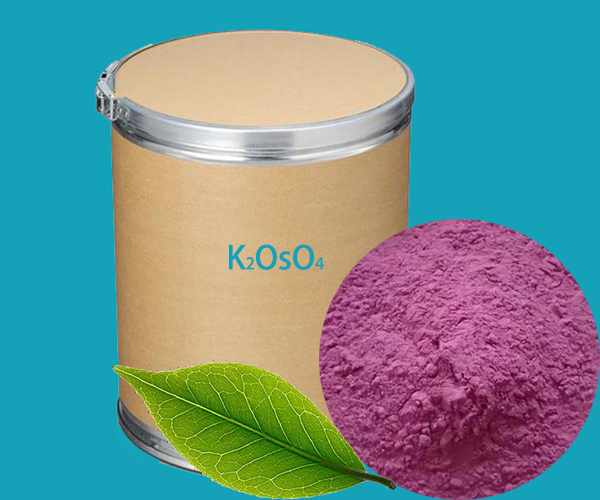Potassium osmate is an inorganic compound with the chemical formula K2OsO4 and is usually found in a hydrated form like K2OsO4·2H2O. It is an oxide salt of osmium that is strongly oxidizing and usually appears as colorless or yellowish crystals.
Properties of Potassium Osmate
1. Oxidizing: Potassium osmate is a strong oxidizing agent capable of oxidizing many organic and inorganic substances.
2. Catalysis: In organic synthesis, potassium osmate is used as a catalyst, especially in the formation of carbon-carbon bonds and carbon-nitrogen bonds.
3. Toxicity: Potassium osmate is a toxic compound that is harmful to the human body and needs to be handled with care.
4. Stability: Potassium osmate is relatively stable in the dry state, but decomposes in moist air.
5. Solubility: It is usually soluble in water.
Uses of Potassium Osmate
1. Catalytic coupling reactions: Potassium osmate is used as a catalyst in organic synthesis, especially in the formation of carbon-carbon bonds and carbon-nitrogen bonds.
2. Oxidizing agent: Potassium osmate is a strong oxidizing agent capable of oxidizing many organic matter, especially in the oxidation reaction of alcohols, which can oxidize alcohols into aldehydes or ketones.
3. Dehydrating agent: In some cases, potassium osmate can be used as a dehydrating agent, for example in the dehydration reaction of alcohols, converting alcohols into olefins.
4. Analytical Reagents: In analytical chemistry, potassium osmate can be used for the quantitative analysis of certain compounds, especially in the Kjeldahl method for determining nitrogen content.
5. Plating: Potassium osmate is also used in the electroplating process as part of the electroplating solution to coat the surface of metal with osmium.
6. Pharmaceutical Synthesis: In medicinal chemistry, potassium osmate can be used to synthesize certain drug molecules, especially in the synthesis of antitumor drugs.
 English
English Español
Español Português
Português Français
Français Deutsch
Deutsch Русский
Русский 中文
中文 日本語
日本語
